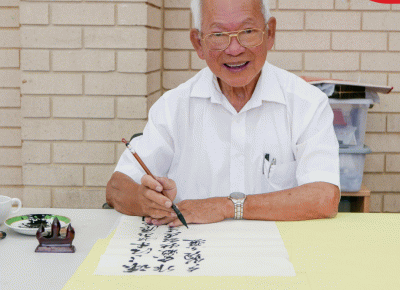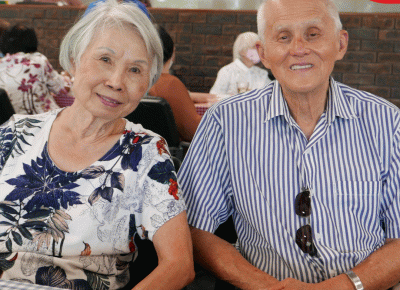
Chung Wah Community Care (CWCC) held a health talk titled "Healthy Eating for Senior Chinese-Australians" at the Balcatta Community Hub. Janine, a dietitian from Ishar Multicultural Women's Health Service, shared valuable insights tailored to the audience's needs. Janine emphasised the importance of adequate, safe, and enjoyable food while considering cultural preferences and tastes.
She highlighted the nutritional richness of traditional Chinese dishes. She used an example of a nutritious clear tonic soup containing grains (such as barley), vegetables (such as seaweed), protein (such as longan), and fruits (such as goji berries). Janine stressed the significant impact of diet on seniors' gut and bone health and food choices suitable for people with diabetes, hypertension, and heart disease.

Emphasising the importance of a balanced diet, Janine introduced the Australian Dietary Guidelines, a crucial guide to help people choose a healthy diet. The guidelines categorise food into five main groups: vegetables, grains and whole grains, protein foods, fruits, and dairy products.
- Vegetables: The Australian Dietary Guidelines recommend at least five servings of vegetables per day. However, seniors are suggested to consume at least four servings. One serving is equivalent to a small bowl of raw vegetables (about 75 grams) or half a cup of cooked vegetables (about 75 grams).
- Dairy Products: It's recommended to consume about 2.5 servings per day of dairy products. One serving is equivalent to 250 millilitres of milk or yoghurt or 40 grams of cheese. These portions provide the necessary calcium and protein. Seniors need at least three calcium-rich servings daily, and Janine emphasised that they require more calcium than younger people.
- Grains and Whole Grains: This category includes bread, rice, pasta, etc. It's recommended to consume about six servings per day. One serving of grains or whole grains is equivalent to one slice of bread, half a cup of cooked rice or pasta, or about 30 grams of cereal. Janine stressed the importance of choosing whole grains that have a slower impact on blood sugar levels. She also advised paying attention to portion sizes and pairing grains with legumes, vegetables, and protein foods (such as tofu or meat).
- Fruits: Janine recommended choosing whole fruits over juice, whether fresh, canned, or frozen, as they are equally nutritious.
Participants found the workshop enriching and engaging, giving Janine a warm round of applause for her valuable insights.


Chung Wah has been servicing the WA community since 1909, dedicated to improving the quality of life of individuals from diverse backgrounds. Moreover, Chung Wah CC has 40 years of professional care experience helping seniors and people with disabilities improve their well-being and better integrate into the community. This year's theme, "Celebrating Our Cultural Strands," reflects our 40 years of commitment to understanding, integration, and moving forward together for a more harmonious and better community for all.





